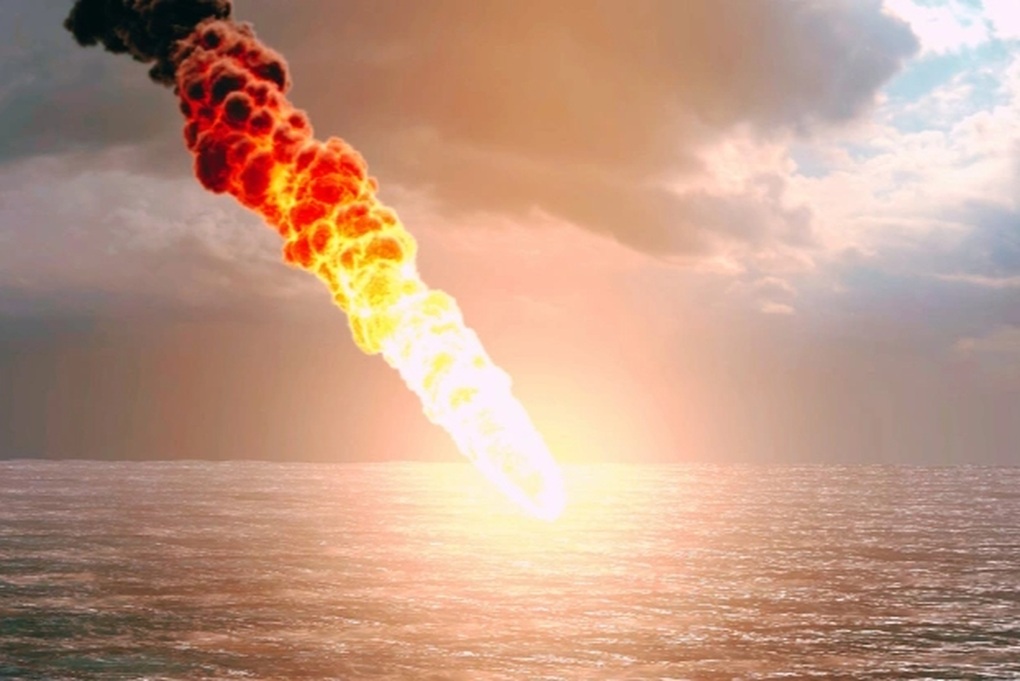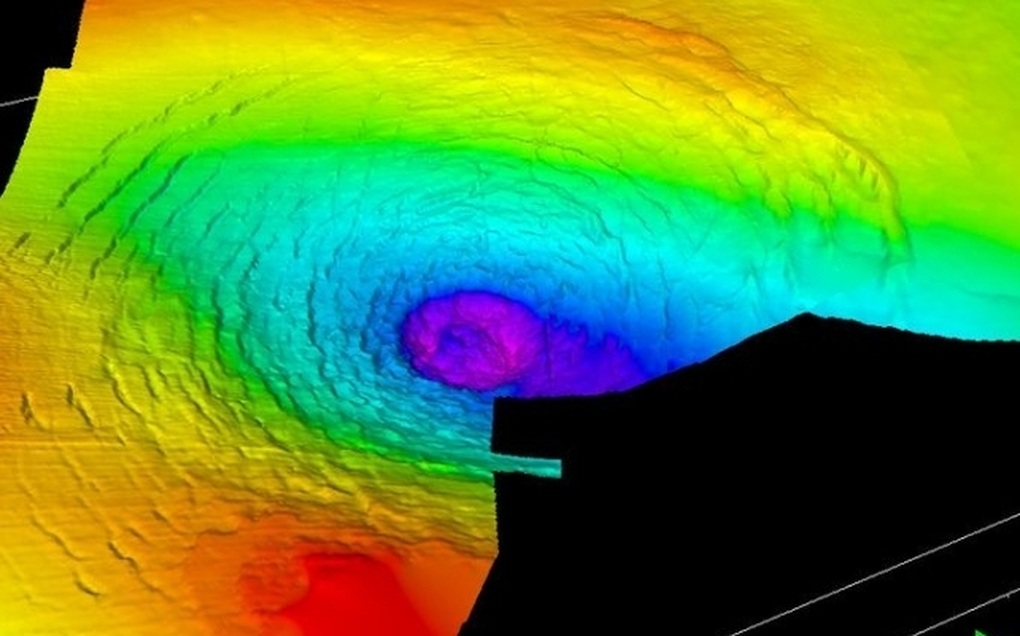A deep hole in the North Sea that has been the subject of controversy for decades has been confirmed to be the result of a meteorite impact during the Eocene period, some 50 million years ago.
Authentic evidence from the deep sea

Illustration of a meteorite that crashed into Earth 50 million years ago (Photo: Getty).
About 50 million years ago, during the Eocene epoch, a 160-meter-diameter meteorite slammed into Earth, crashing into what is now the North Sea, between England and northwestern Europe.
This horrific collision created a crater 3 km wide and about 1 km deep on the ocean floor, while also blowing a column of water and rock more than 1.5 km high into the sky, accompanied by a tsunami hundreds of meters high.
The crater, known as Silverpit, lies about 130km off the southeast coast of England and is 700m deep under the sea. Since its discovery using 3D seismic data in 2002, Silverpit has been at the centre of a long-running debate among scientists about its origins.
Initially, the circular features and central structure led many researchers to believe it was a meteorite impact crater.
However, other hypotheses such as underground salt movements or volcanic activity have also been proposed, keeping the debate deadlocked for years. A vote at a 2009 geological conference even rejected the impact hypothesis, causing it to be virtually eliminated from subsequent research.
However, the latest research, led by Dr. Uisdean Nicholson, a geologist at Heriot-Watt University (Scotland), used modern seismic imaging and analysis of samples from a nearby oil well, showing convincing evidence of Silverpit's extraterrestrial origin.
Mystery solved

Image of Silverpit crater appears on observation equipment (Photo: NC).
The breakthrough came from the discovery of “shocked” quartz and feldspar crystals, which can only form under conditions of extreme pressure from a high-speed impact, such as from a meteorite, according to details published in the journal Nature Communications .
These crystals were found at the exact depth of the Silverpit crater floor, confirming beyond doubt that this is a real impact crater.
“We were incredibly lucky to find these crystals. It was like finding a needle in a haystack,” said Dr Nicholson. “They are the key to unlocking the mystery because their unique structures only appear in extremely high-energy collisions.”
This assertion is also agreed by Professor Gareth Collins, a planetary scientist at Imperial College London, who has also supported the meteorite hypothesis since the early years of the debate.
“I have always believed that this is the simplest explanation that fits the observations best,” said Professor Gareth Collins. “This confirmation opens the door to studying the impact of impacts on the subsurface structure of planets, which is very difficult to do on planets other than Earth.”
There are only about 200 confirmed impact craters on Earth, of which fewer than 30 are located on the ocean floor. Silverpit is not only a rare case, but also a nearly intact one, which is remarkable in the context of the Earth constantly changing due to plate tectonics and geological erosion.
Scientists hope the discovery of the Silverpit crater will help expand understanding of how celestial collisions have shaped Earth in the past, and aid in predicting and preventing risks from future space objects.
“By studying impact craters like Silverpit, we can better understand the planet's impact history, as well as build better simulation models in case a similar collision occurs in the future,” Dr. Nicholson emphasized.
Source: https://dantri.com.vn/khoa-hoc/khoa-hoc-co-cau-tra-loi-ve-vu-thien-thach-rong-160-met-lao-xuong-trai-dat-20250930082644638.htm




![[Photo] General Secretary To Lam receives Vice President of Luxshare-ICT Group (China)](https://vphoto.vietnam.vn/thumb/1200x675/vietnam/resource/IMAGE/2025/11/15/1763211137119_a1-bnd-7809-8939-jpg.webp)

![[Photo] Prime Minister Pham Minh Chinh meets with representatives of outstanding teachers](https://vphoto.vietnam.vn/thumb/1200x675/vietnam/resource/IMAGE/2025/11/15/1763215934276_dsc-0578-jpg.webp)



































































































Comment (0)